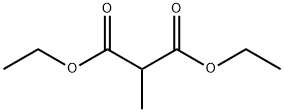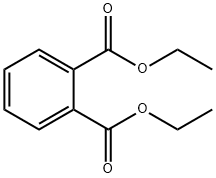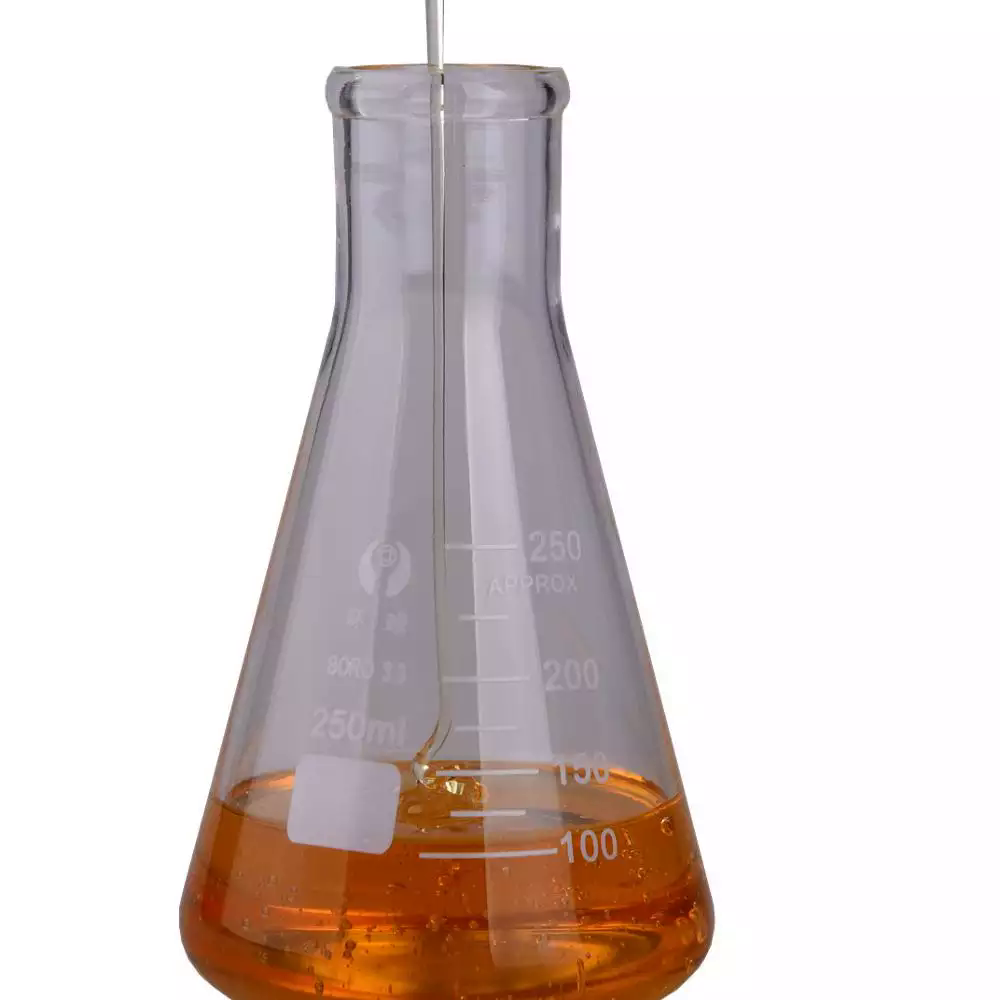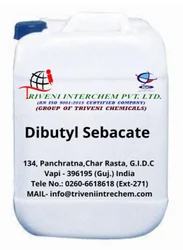Diethyl sebacate
Synonym(s):Decanedioic acid 1,10-diethyl ester;Diethyl decanedioate;Diethyl sebacate;Sebacic acid diethyl ester;Sebacic acid diethyl ester, Decanedioic acid diethyl ester
- CAS NO.:110-40-7
- Empirical Formula: C14H26O4
- Molecular Weight: 258.35
- MDL number: MFCD00009219
- EINECS: 203-764-5
- SAFETY DATA SHEET (SDS)
- Update Date: 2025-12-17 09:49:47

What is Diethyl sebacate?
Chemical properties
Diethyl sebacate is a clear colourless liquid or oily liquid. Solidifies in the cold, melts at 1.5° C. B.P. 306° C. (decomposition of the ester). Sp.Gr. 0.97. 0.15% soluble in water, soluble in alcohol and oils. Faint, but pleasant, winey-fruity odor, resembling that of Quince and Melon.
Chemical properties
Dimethyl sebacate has a melon, wine, fruity, quince aroma.
The Uses of Diethyl sebacate
Diethyl Sebacate is a flavoring agent that is a liquid, colorless to pale yellow in appearance with a slight odor. it is insoluble in water and miscible in alcohol, ether, and other organic solvents. it is obtained by chemical synthesis. it is also termed ethyl sebacate.
Preparation
Diethyl sebacate is obtained by heating sebacic acid and ethanol in the presence of concentrated H2SO4 or other acid catalysts.
Definition
ChEBI: Diethyl decanedioate is a fatty acid ester. It is the diester of ethyl alcohol and Sebacic Acid that used as an aromatic in food.
General Description
Diethyl sebacate is a volatile organic compoind used as a flavoring agent. It is reported to be found in longan honey porduced by Apis cerana.
Health effects
Diethyl sebacate is reported to be used in cosmetics at 1.5%, and no irritation or sensitization was reported in clinical studies of a formulation containing 1.5% diethyl sebacate.
Flammability and Explosibility
Not classified
Contact allergens
This emulsifer has rarely been reported as a sensitiz- ing agent, mainly in topical treatments.
Safety Profile
Mildly toxic by ingestion. A skin irritant. See also ESTERS. When heated to decomposition it emits acrid smoke and irritating fumes.
Properties of Diethyl sebacate
| Melting point: | 1-2 °C (lit.) |
| Boiling point: | 312 °C (lit.) |
| Density | 0.963 g/mL at 25 °C (lit.) |
| vapor pressure | 0.018Pa at 25℃ |
| refractive index | n |
| FEMA | 2376 | DIETHYL SEBACATE |
| Flash point: | >230 °F |
| storage temp. | Store below +30°C. |
| solubility | <0.1g/l |
| form | liquid |
| color | colorless to pale yellow |
| Odor | mild melon fruity quince wine |
| Water Solubility | slightly soluble |
| JECFA Number | 624 |
| Merck | 14,8415 |
| BRN | 1790779 |
| Dielectric constant | 5.0(30℃) |
| CAS DataBase Reference | 110-40-7(CAS DataBase Reference) |
| NIST Chemistry Reference | Decanedioic acid, diethyl ester(110-40-7) |
| EPA Substance Registry System | Decanedioic acid, diethyl ester (110-40-7) |
Safety information for Diethyl sebacate
| Signal word | Warning |
| Pictogram(s) |
 Exclamation Mark Irritant GHS07 |
| GHS Hazard Statements |
H315:Skin corrosion/irritation H319:Serious eye damage/eye irritation H335:Specific target organ toxicity, single exposure;Respiratory tract irritation |
| Precautionary Statement Codes |
P261:Avoid breathing dust/fume/gas/mist/vapours/spray. P305+P351+P338:IF IN EYES: Rinse cautiously with water for several minutes. Remove contact lenses, if present and easy to do. Continuerinsing. |
Computed Descriptors for Diethyl sebacate
Diethyl sebacate manufacturer
Triveni Interchem Private Limited (Group Of Triveni Chemicals)
New Products
Indole Methyl Resin tert-butyl 9-methoxy-3-azaspiro[5.5]undecane-3-carboxylate Boc-His(Boc)-OH 2-CTC Resin 4-Chloro-7-tosy1-7Hpyrrolo[2,3-d]pyrimidine 5,7-Dibromo-1H-indole 2,5-dichloro-N-hydroxy-4,6-dimethylpyridine-3-carboximidamide 2,2-Dimethoxy-7-azaspiro[3.5]nonane hydrochloride 4-chloromethyl-5-methyl-1,3-dioxol-2-one (DMDO-Cl) R-2-BENZYLOXY PROPIONIC ACID 1,1’-CARBONYLDIIMIDAZOLE 1,1’-CARBONYLDI (1,2-4 TRIAZOLE) N-METHYL INDAZOLE-3-CARBOXYLIC ACID 4-((2-hydroxyethyl)thio)benzoic acid 1-(TERT-BUTOXYCARBONYL)-2-PYRROLIDINONE Methyl 6-methylnicotinate 3-Pyridineacrylic acid tert-Butyl carbazate TETRAHYDRO-2H-PYRAN-3-OL 2-((4-morpholinophenylamino) (methylthio) methylene) malononitrile 3-(4-morpholinophenylamino)-5-amino-1H-pyrazole-4-carbonitrile 2,4-dihydroxybenzaldehyde 1,3-Diethyl-1,3-Diphenylurea Methyl 2-methylquinoline-6-carboxylateRelated products of tetrahydrofuran








You may like
-
 110-40-7 Diethyl Sebacate 99%View Details
110-40-7 Diethyl Sebacate 99%View Details
110-40-7 -
 Diethyl Sebacate CAS 110-40-7View Details
Diethyl Sebacate CAS 110-40-7View Details
110-40-7 -
 Diethyl sebacate 98.00% CAS 110-40-7View Details
Diethyl sebacate 98.00% CAS 110-40-7View Details
110-40-7 -
 Diethyl sebacate CAS 110-40-7View Details
Diethyl sebacate CAS 110-40-7View Details
110-40-7 -
 Diethyl Sebacate, Size: Drum, LiquidView Details
Diethyl Sebacate, Size: Drum, LiquidView Details
110-40-7 -
 Liquid Transparent Di Ethyl Sebacate, For Laboratory, 110-40-7View Details
Liquid Transparent Di Ethyl Sebacate, For Laboratory, 110-40-7View Details
110-40-7 -
 Diethyl Sebacate Tanker LoadView Details
Diethyl Sebacate Tanker LoadView Details
110-40-7 -
 Thiourea 99% ARView Details
Thiourea 99% ARView Details
62-56-6
